Month: October 2023
David Byrd
DANIEL BLAU, at its Maximilianstraße gallery, is pleased to present an exhibition of seven exceptional paintings by American painter David Byrd, spanning a period from the 1980s to 2008.
Byrd was born in Springfield, Illinois in 1926. He joined the Merchant Marines as a teenager and was subsequently drafted into the US Army during the Second World War. His service as an artilleryman permitted him to take advantage of the G.I. Bill for his studies, which he briefly pursued at the Dauphin School of Art in Philadelphia before transferring to the Ozenfant School of Fine Arts in New York City.
His academics behind him, Byrd spent most of the 1950s working a variety of jobs, all of which had one thing in common: a minimal demand on Byrd’s time, allowing him plenty of opportunity to paint. He worked as a janitor and a postman, at a bar and a cinema, before, in 1958, taking work as an orderly in the psychiatric ward of the Veterans Administration Medical Hospital in Montrose, New York. Over the following thirty years, Byrd took his experiences there and, very quietly, immortalized them. The unusual images of poignant potency he created, imbued with the disquieting atmosphere of the institution, have become his best-known work. Byrd’s very particular, distinctive style of painting – simple, flat shapes, executed in pale pastel tones – is employed with a keen sensitivity and melancholy tenderness in the artist’s recollections of the patients he has seen, of their inner struggles with the trauma of war and its aftermaths.
Byrd’s genius lends to all of his paintings, including those depicting people and encounters outside of the hospital, a very particular aura; through his handling of faces and their features, and the overall simplicity of his compositions, he evokes a sense of tension and psychological separation between subject and viewer. Nevertheless, a certain warmth is betrayed in his more sober scenes: his compassion is unmistakable in the softness of his small, countless brushstrokes, in the visible care and sensitivity with which the artist made them.
Following his retirement in 1988, Byrd bought a house in Sidney Center, New York, where he lived in relative seclusion until his death in 2013. The first professional exhibition of his work had taken place earlier that same year, at the Greg Kucera Gallery in Seattle; his character and lifestyle meant that the artist rarely showed his art to others, so it was only thanks to a happenstance discovery by a neighbor, and only in 2012, that it came before the public eye at all. A host of exhibitions followed, at various galleries and institutions including the West Point Museum. Today, the artist’s estate is represented by the Anton Kern Gallery, where his work continues to be exhibited.
The seven works currently displayed at DANIEL BLAU cover a long period of Byrd’s creative career, so differences in Byrd’s visual language when dealing with different themes can be quite clearly recognized. “Woman in Car, Filling Station,” from around 1981, distinguishes itself in the artist’s attention to a setting’s background and subject’s surroundings when working with genre scenes. What results in that case is a wider range of colors and a fuller composition when compared, for instance, to portraiture like 2008’s “Man.” The lone figure in that painting braces himself against the cold, facing away from the viewer in apparent reverie; he is all that occupies the small canvas. This sort of visual minimalism is typical of Byrd’s hospital paintings, which he continued to create, from the vast halls of his memory, long after retirement.
DOWNLOAD press text
Exhibition Dates:
November 2, 2023 – January 16, 2024
11am – 6pm | mon – fri
Maximilianstraße 26, 80539 München
The works in the exhibition are for sale. Please contact us for availability and prices.
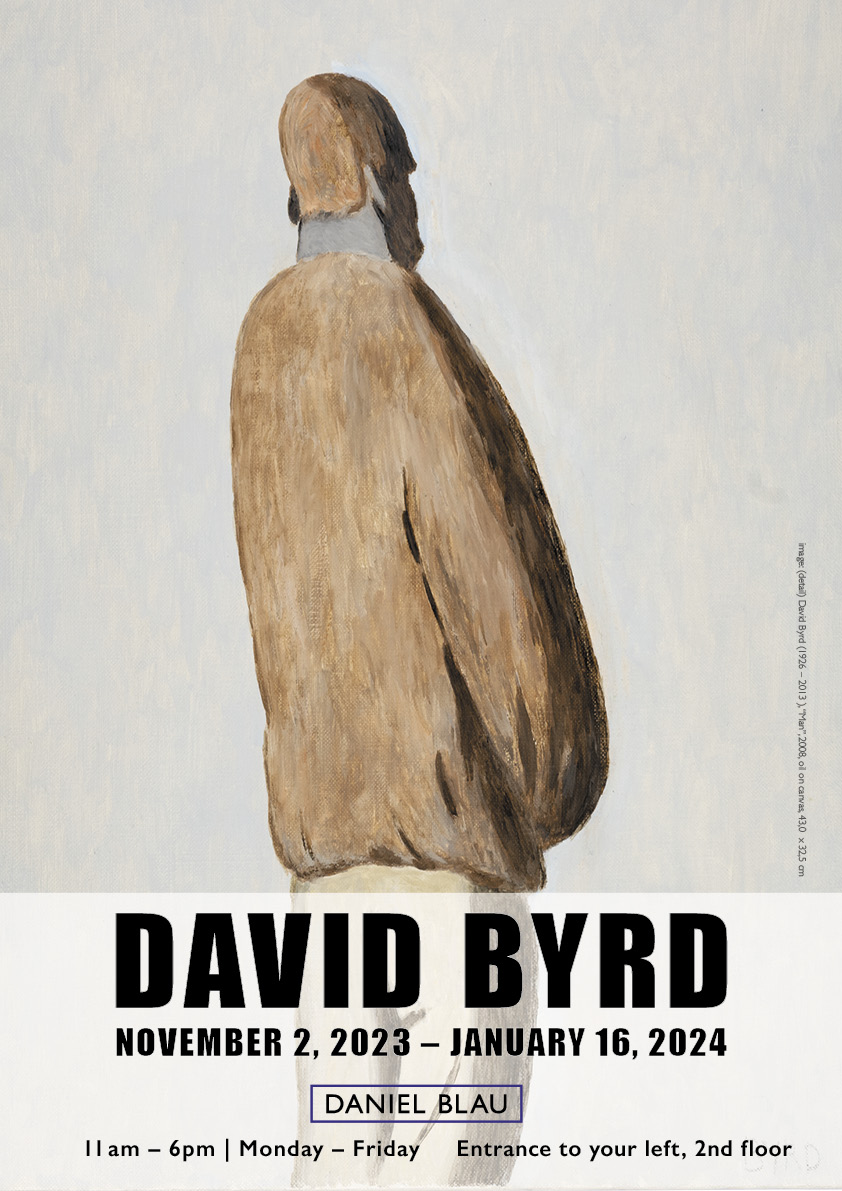
Paris Photo 2023
DANIEL BLAU is pleased to present three exhibitions at Paris Photo 2023, each one a special insight into a particular and fascinating facet of photography.
Exceptional NASA Pictures
These photographs draw us into the extraordinary world of American space exploration in the 1960s and 70s. During this period of historically groundbreaking discovery, every achievement of the Space Race became a global sensation, and this once - fresh sense of wonder, awe and inspiration lives on in these photographs. They represent not only the significance of this period for scientific innovation, the advancement of technology and the furthering of mankind’s knowledge of the universe, but also the artistic capabilities of such phenomenal images to transport the viewer, instantly igniting emotion and curiosity.
Featuring photographs taken on such celebrated missions as (among others) Friendship 7, Gemini 4, Apollo 11 and Mariner 9, this exhibition takes us into the heart of the early space exploration. A photograph taken on the Apollo 11 crew’s return journey to Earth shows the Moon as it had never been seen before - a conquest of humanity, a glittering prize newly-won. The first ever EVA (extravehicular activity) – or spacewalk – performed by an American is shown in an oversized photograph of Ed White during Gemini 4. The palpable silence of the image reflects its wondrous subject, and the insufficiency of words to produce a response to the sight of it. Mariner 9’s photographs of the Martian surface describe another historically unprecedented encounter with the Solar System; as the first spacecraft ever to orbit another planet, its over 7,000 images of Mars reflect the ambition and intellectual hunger of NASA of this era. Another photograph in this exhibition was taken by John H. Glenn, Jr. during Friendship 7, the solo mission upon which, in February 1962, when became the first American to orbit the Earth. His color photograph of the brilliantly - lit space particles he famously described as ‘fireflies’, for lack of knowledge to explain them at the time, awakens the sense of fascinated mystery with which the world then viewed space, and which drove the determination of scientists to seek, scrutinize and attempt to ‘solve’ it.
Masterworks of Photo Retouching
The second of DANIEL BLAU’s exhibitions at this year’s Paris Photo showcases the striking and unusual effects of photo retouching in the 1930s, 40s and 50s.
During this time, the potential to alter the perceived meaning of a photograph was explored to thrilling effect. Retouching using a stylus could add detail, reinforce lines, enhance contrast and easily bring any element of the photograph to the fore. The introduction of gouache allowed dramatic emphasis to be created. Being so dark and impenetrable, it could also subtly obscure a photograph’s features as desired by the editor, or create impactful silhouettes, as we see in “Exercises”.
Among these photographs are also several amazing examples of the art of airbrush. A small, handheld tool that was originally invented in 1879 by the American Francis E. Stanley, the airbrush combines paint with blown air to enable a smooth, even application of pigment across a surface – a spraying technique which can be thought of as a precursor to the spray-paint canister of today. Stanley used the airbrush to colorize images, but it can also add entirely new visual elements to a photograph, as this exhibition demonstrates. For example, the light translucency of the airbrush used on “Normandy, France: Ours Not to Reason Why” gives the cross its ghostly, ethereal appearance, exquisitely embellishing both the subject matter and the artistic meaning of the image.
This curation of photographs exhibits the capacity of photo retouching to evoke a sense of the unexpected, of surprise, curiosity, imagination and experimentation, and to add layers of complex, nuanced messaging to captivating, existing photographs whether satirical, commercial, historical or political.
Daido Moriyama – New Works
This exhibition features 22 new paintings Japanese artist Daido Moriyama based on photographs he had taken in New York City in 1971. These pictures perfectly encapsulate Moriyama’s unmistakeable style of his trademark strong contrast. Here the artist achieves an incomparable sense of atmosphere by using his concept of are, bure, bokeh (meaning grainy, blurred and out of focus) to document his immediate surroundings – the everyday occurrences of New York City encountered by his camera.
Each canvas displays two consecutive exposures in a single negative, the result of Moriyama’s own modification of his 35mm camera; the artist chose these moments spontaneously but communicates them with much more consideration. By showing us each instant from two perspectives at once, Moriyama invites us closer to them, letting us begin to absorb whatever intangible, fleeting impulse it was that prompted him to take out his camera.
Download press release Paris Photo 2023
ONLINE VIEWING ROOM
PARIS PHOTO
Grand Palais Éphémère
Place Joffere
75007 Paris
Booth B14
Fair Dates:
Vernissage (by invitation only):
Opening Hours:
Wednesday,
November 8, 2023
5 pm – 9 pm
Public Opening:
November 9 – 11, 2023
Opening Hours:
1 pm – 8 pm
November 12, 2022
Opening Hours:
1 pm – 7 pm
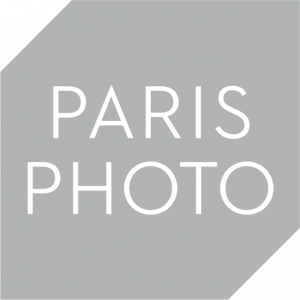
ANDY WARHOL Three Times Out
We are delighted to say that 29 drawings by Andy Warhol from DANIEL BLAU are being shown at the Hugh Lane Gallery, Dublin, as part of the new exhibition, “Andy Warhol: Three Times Out”.
Featuring over 250 works borrowed from museums and collections in the USA, Canada, Europe, and the Warhol Museum in Pittsburgh, this exhibition sheds light on the artist’s extraordinary approach to the relationships between fine art, consumerism, and popular culture.
The exhibition is now open; tickets are on sale via this link: Buy tickets
Hugh Lane Gallery
Charlemont House
Parnell Square North
Dublin 1
D01 F2X9
Ireland
exhibition dates:
06 October, 2023 – 28 January, 2024
Opening hours:
Mon Closed
Tues to Thurs 9:45 am – 6:00 pm
Fri 9:45 am – 5:00 pm
Sat 10:00 am – 5:00 pm
Sun 11:00 am – 5:00 pm
Images by Denis Mortell Photography
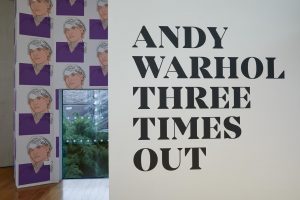
Paris
The Occupation of Paris during World War II was a dark and harrowing time for the city and its people. For four years, Paris was under Nazi control, and the citizens endured hardship, deprivation, and constant fear. However, on August 25th, 1944, Parisians rose up against the occupying forces in what became known as the Liberation of Paris. The city was finally freed, and the resistance fighters, alongside Allied Forces, marched triumphantly through the streets.
The events of that historic day were captured by several photographers, providing a vivid and powerful representation of the city’s liberation.
Amongst them, those working for LIFE Magazine, are the focus of this exhibition.
Exhibition Dates:
exhibition at Galerie Meyer:
17, rue des Beaux-Arts
75006 Paris – France
Vernissage:
November 2, 2023
2:30 pm – 9:00 pm
Public Exhibition:
November 3 – 25, 2023
opening hours:
tuesday to friday
2:30 pm – 6:00 pm
and
saturdays
11:00 am – 1:00 pm,
2:30 pm – 7:00 pm
Download press release






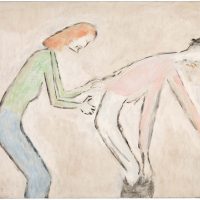
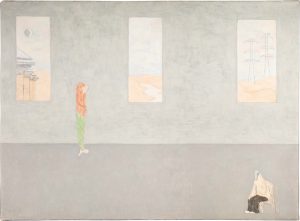
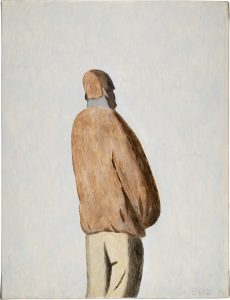

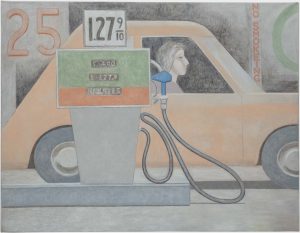

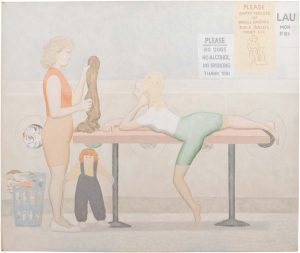
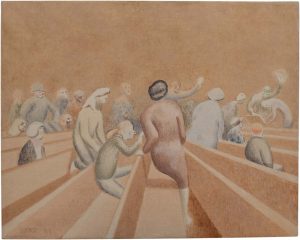
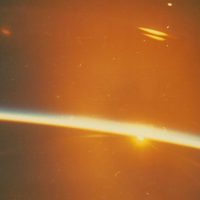
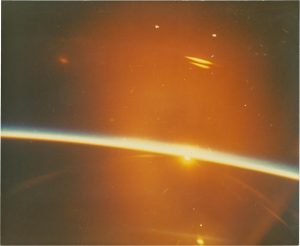


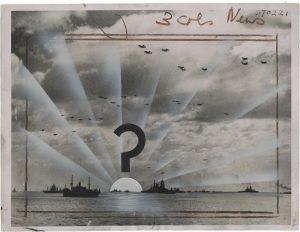

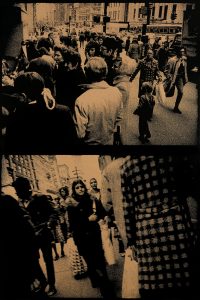

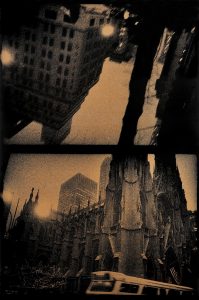
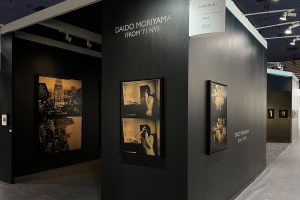

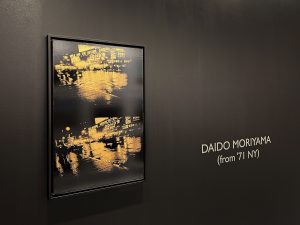
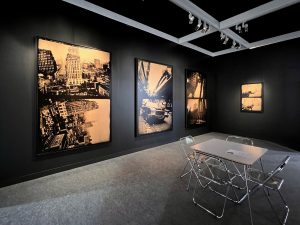
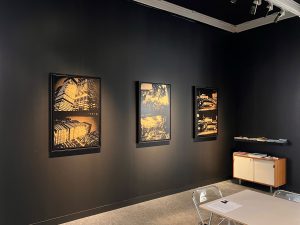
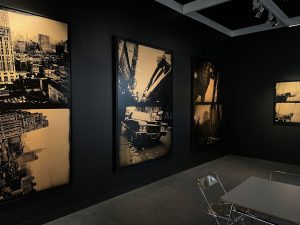
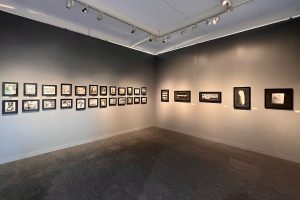

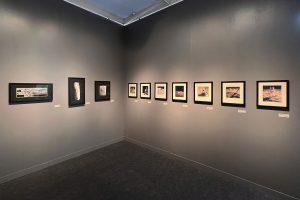
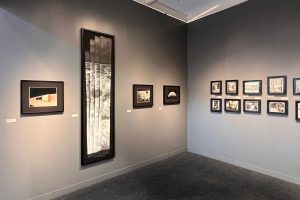
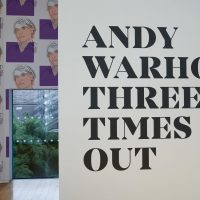
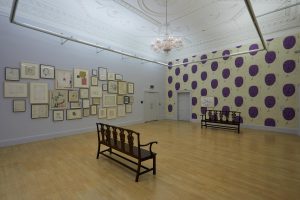



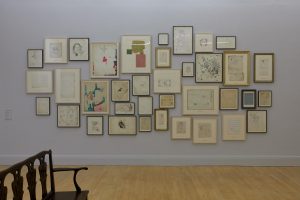
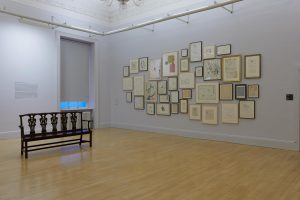
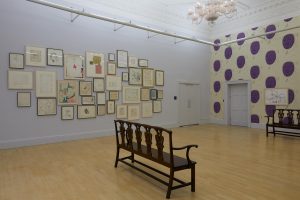

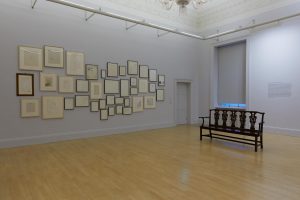

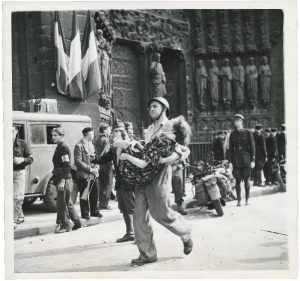
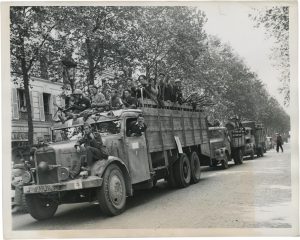
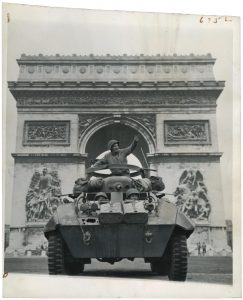
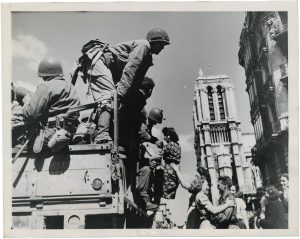

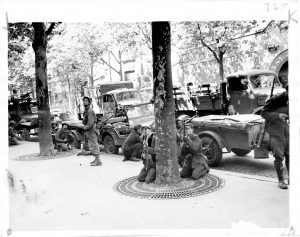
 +49 89 29 73 42
+49 89 29 73 42